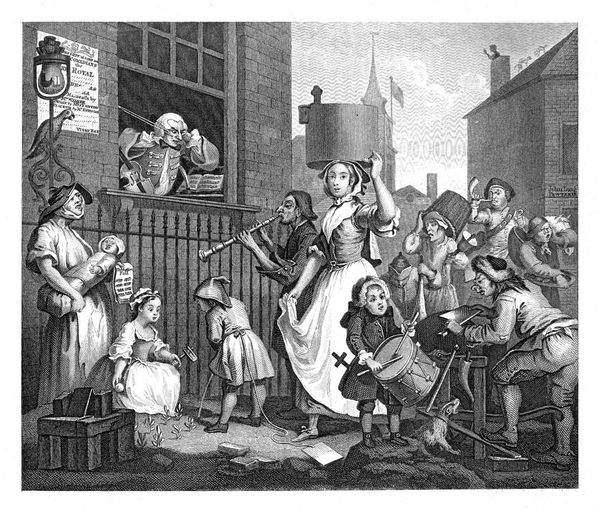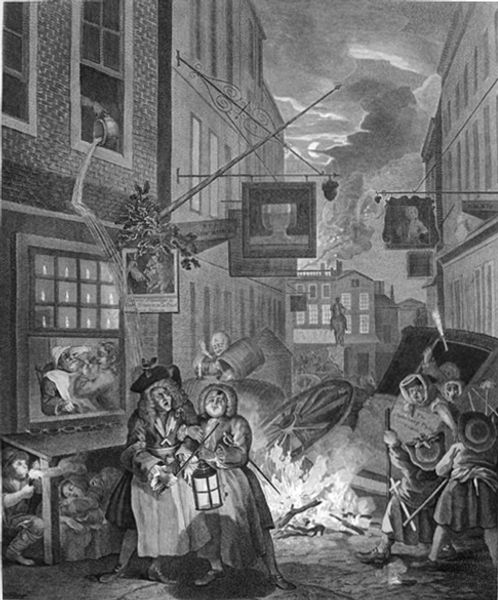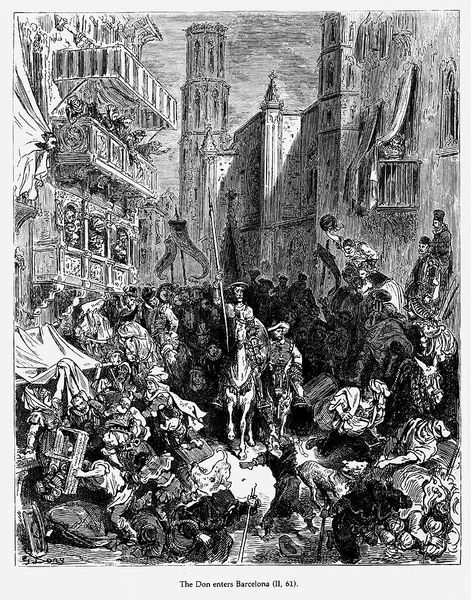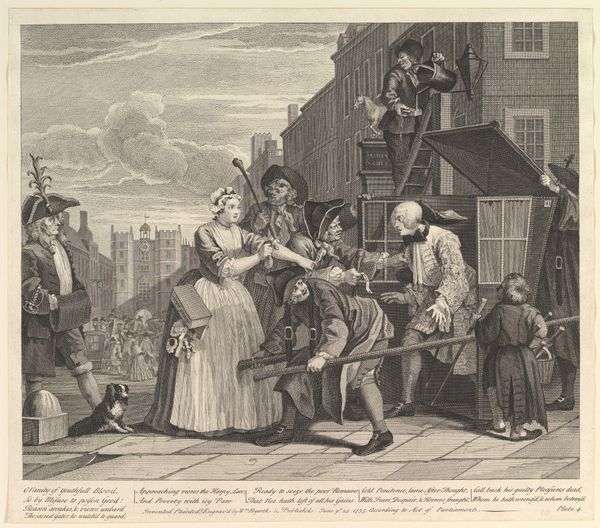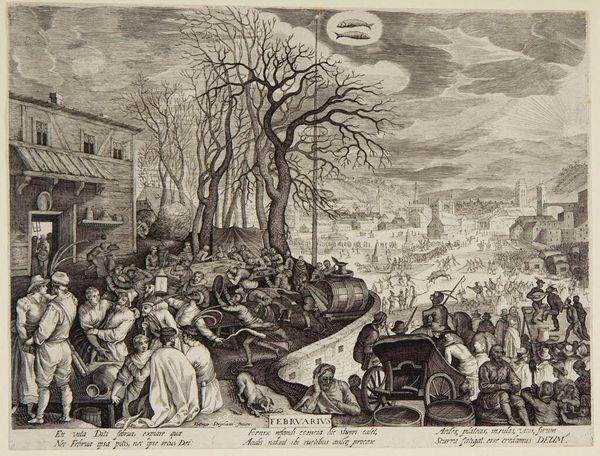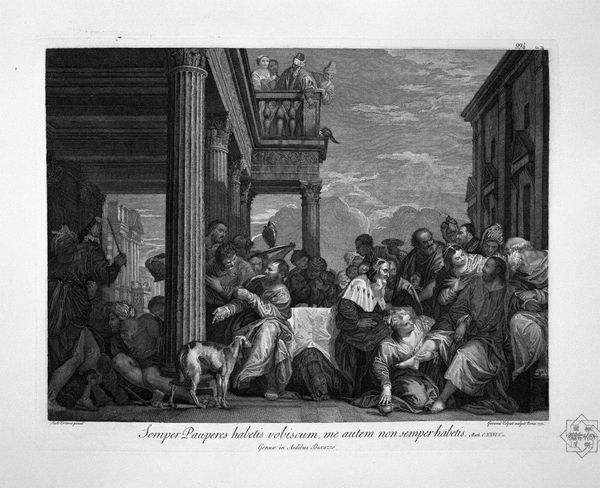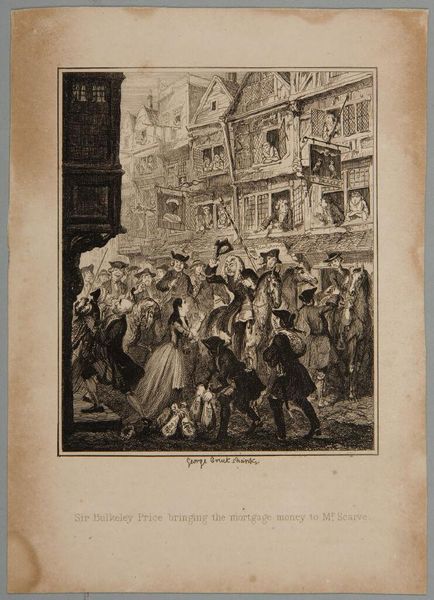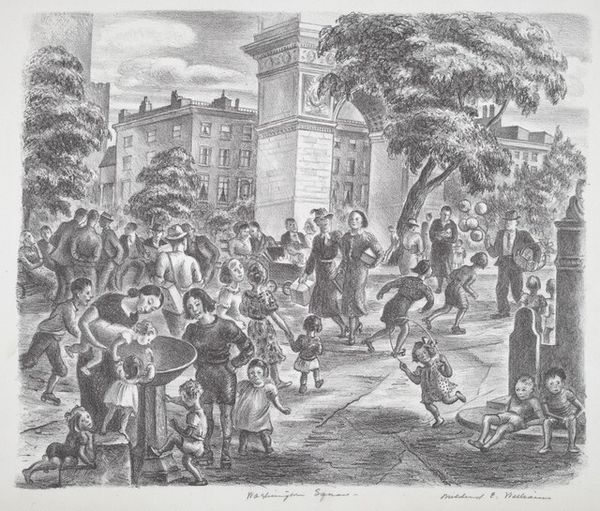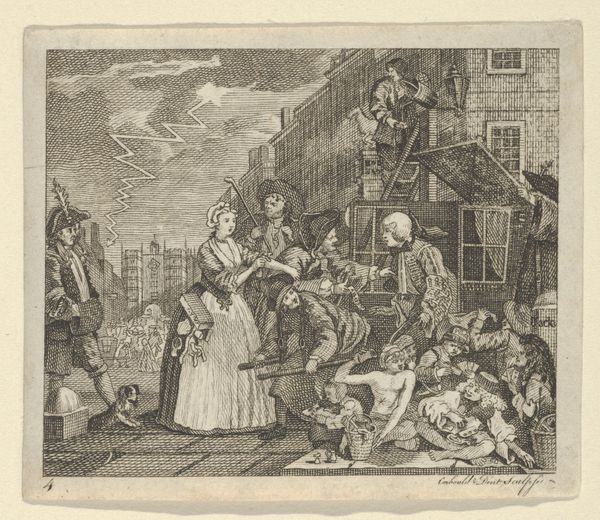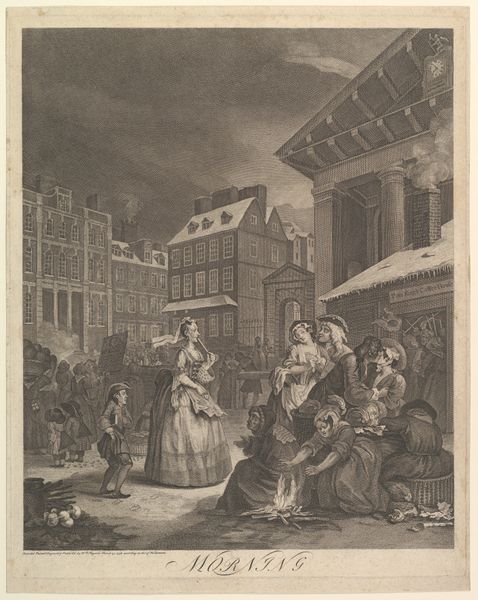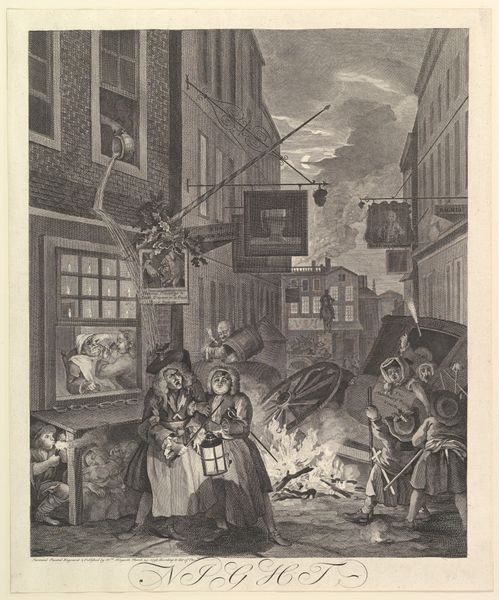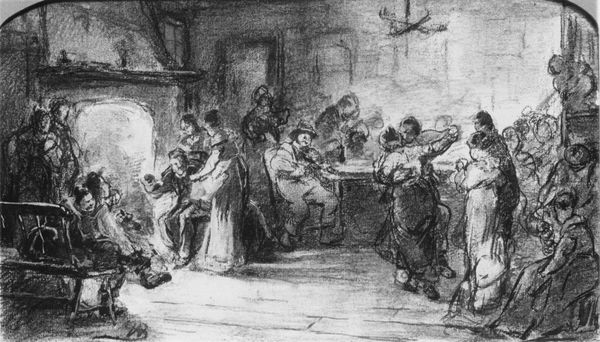
print, etching
#
allegories
#
baroque
#
portrait image
#
symbol
#
portrait
# print
#
etching
#
black and white format
#
portrait reference
#
black and white
#
cityscape
#
facial study
#
genre-painting
Copyright: Public domain
Curator: This is "Times of the Day: Morning," a print etching by William Hogarth. It depicts a London cityscape in the early hours. Editor: What strikes me first is the stark contrast. We have the well-to-do lady elegantly dressed amidst, what seems like, the remnants of the night’s debauchery and the rising smoke from the impoverished's fire. The actual printmaking creates such drama! Curator: Exactly. Hogarth was quite interested in creating works that exposed social inequalities. He skillfully used prints to disseminate his satirical observations widely. "Times of the Day" as a series was a critique of London life and manners. Editor: The layering of society— the lady, likely of means judging by her attire, juxtaposed against the fire-side inhabitants—it's palpable, almost tactile through the engraving. I'm really struck by the economy of mark making to show these differing strata in society! Curator: This scene isn’t just about different classes existing side-by-side, it highlights their conflict, a direct response to socio-political events of the era. Hogarth consistently questioned the prevailing social and moral standards. And he used his artistic and professional access to these scenes to show to the common man through printed artworks, easily acquired and cheaply sold. Editor: Yes! This also creates more insight in its material execution; print allowed more everyday folk insight to London high and low life alike through readily created materials, creating an image as material critique. Curator: I find this one fascinating in his whole production for being emblematic of his view of London: vibrant but corrupt, full of social contrasts, but teeming with opportunities for social critique and accessible dialogue. Editor: I agree. Considering his craftsmanship and focus, the prints stand not just as historical records, but incisive examples of how visual art interacts with material production to reflect social realities.
Comments
No comments
Be the first to comment and join the conversation on the ultimate creative platform.

